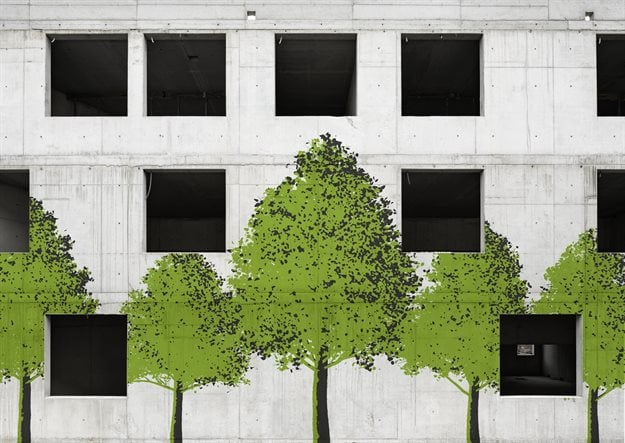#BizTrends2020: 5 key architectural and sustainable initiative trends

World economic and environmental trends have a massive impact on architecture, and our industry vision for 2020 matches the focus of the world. Here are five key architectural and sustainable initiative trends set to embody our industry’s commitment to sustainable development and carbon neutrality.
#1. Trend: The rehabilitation of old buildings in established urban precincts
Not just preserving and revealing our history, the reuse and renewal of existing buildings in our cities saves energy, materials and resources. Iron, wood, aluminum, and recycled materials will be characteristic of “rehabilitation architecture” and will reduce the cost of building. This form of architecture will allow for sustainable and flexible building design to adhere to the principles of “long life, loose fit, low energy”.
It will not only ensure the preservation of our built legacy, but also facilitate the restoration of existing urban centres and towns. It affirms the continuity and evolution of urban societies.
#2. Trend: Even smarter buildings
The huge advances in technology systems can be applied to both large- and small-scale buildings, in urban or rural settings. These technologies allow the inhabitants of the building to not only control temperature, light, and security as needed, but gives them control to calculate their council utility bills and manage daily energy use and efficiency. They can then factor in any maintenance actions to be taken and become part of the future with on-the-go charging networks for e-cars for staff and customers.
As more buildings go on-line with complex integrated technologies, we develop a better understanding of smart cities and make human lives easier.

#3. Trend: Open co-working office spaces
Our old South African office buildings still utilise the segmented office set-up plan. As the open plan co-working space has flourished in recent years, we now have massive data and research to confirm this design encourages a collaborative, cooperative working environment. This growing trend is driven in part as large organisations with large permanent staff have moved towards micro teams within their structure, and employ a greater number of contractors to offset their permanent team.
Part of this trend is an “open to the public” portion of the building, for example, a public coffee shop, and co-working space. This open environment gives the public and customers greater exposure to the organisation's vision. “Open to the public” can also showcase the impact their organisation has on people and society.
This is the architecture of openness and transparency.
#4. Trend: Show me your sustainability
This architectural trend will reveal not only the materials used, but also the sustainable systems applied within the building.
As organisations can flaunt their sustainable building credentials and best practices, they educate onlookers as to what is possible, and set a precedent for future builds. Through sustainable architecture, we can show buildings and landscapes rooted and designed for their local climate, topography, history and local building practices.
#5. Trend: A return to city-making 101
A collaborative process is the key success for creating a sustainable, functioning city. Greater collaboration between the team – from city planners, urban designers and architects, and the community - will become a bigger, better trend into 2020.
When we plan for the long-term, through sustainable urban planning, with short-term strategic urbanism, the results are far more positive for the people and the environment. This approach can see South Africa make a move towards creating more sustainable cities and become a showcase on the world stage.
By designing a living and working environment that supports green initiatives, we can move our citizens towards responsible consumption of our precious resources. In creating cities and buildings that work for our environment, we can create a sustainable future.


























